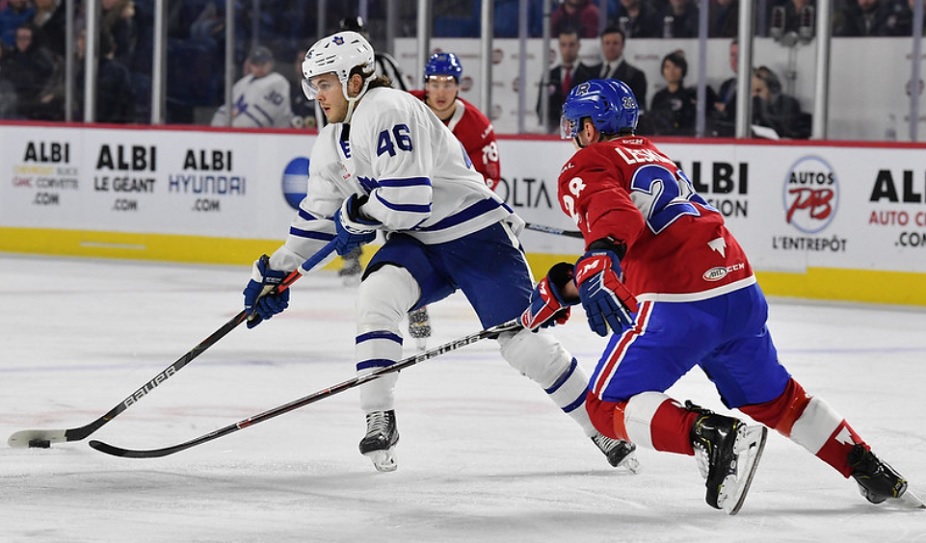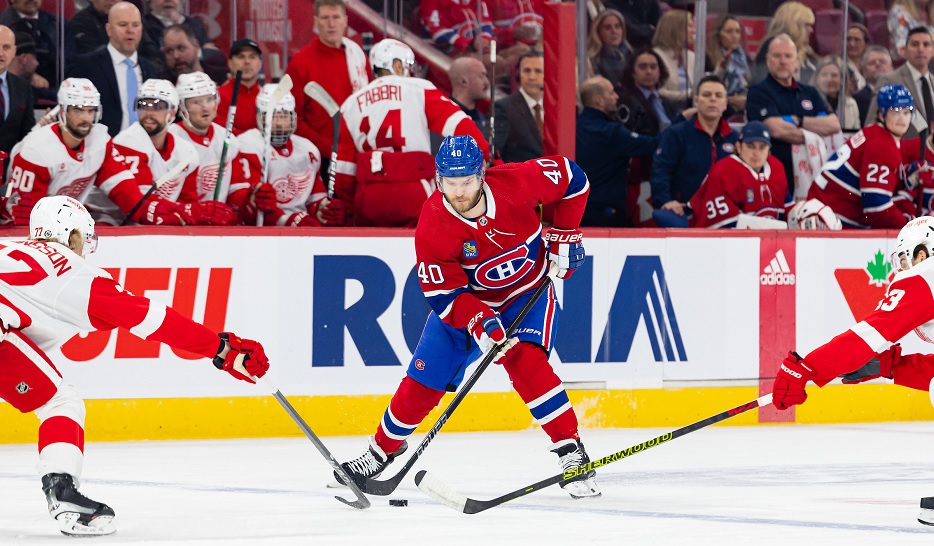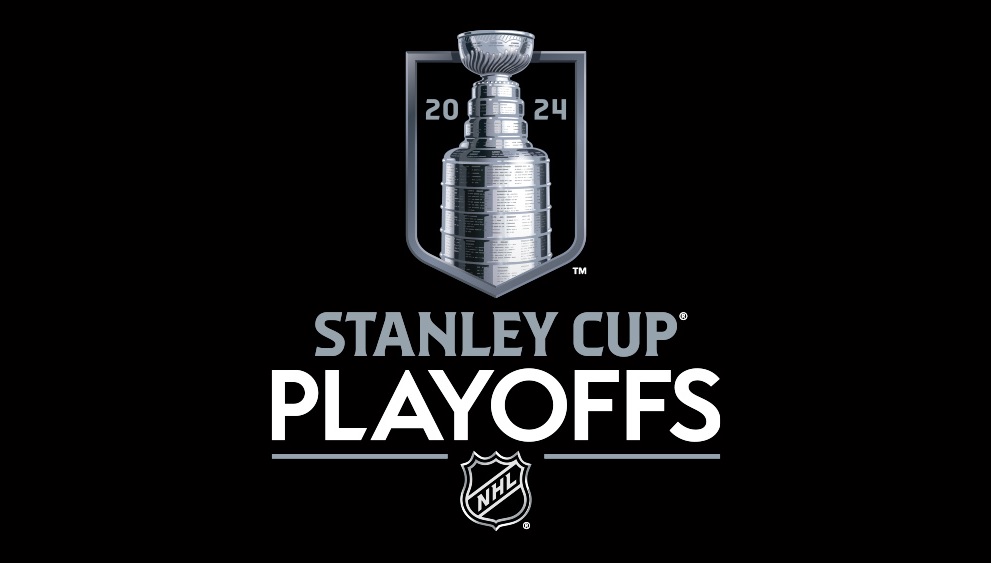HabsWorld.net --
In our second group of prospects, we have some players who are longer-term projects plus a couple that have already made their NHL debut but have a questionable long-term fit with the team.
Overview
Here are the criteria that each player had to meet to be eligible to be in these rankings:
1) The player must be 24 years old or younger as of October 1, 2021
2) The player must have no greater than 50 games of NHL experience (including regular season and playoffs)
3) The player cannot be signed to an AHL contract
Here are the departures from last year’s list (previous ranking in parentheses):
Graduated – NHL GP: Alexander Romanov (2), Jake Evans (11)
Graduated – Age: Lukas Vejdemo (23)
Traded – Hayden Verbeek (36)
Lost in Expansion – Cale Fleury (12)
Released – Jacob LeGuerrier (20), Joni Ikonen (31), Arsen Khisamutdinov (33), Kieran Ruscheinski (37)
Included with each ranking is an estimate of the NHL readiness date for each prospect. For some players, the estimate is a specific season while others whose projected development paths are harder to determine will be in a range. Players are assessed on a combination of upside, likelihood of making it to the NHL, and overall value to the organization.
The plan heading into the season was for these to run during the Olympic break which was going to give us some coverage when the Habs were off for four weeks but obviously, that’s not happening now. Early-season performances have been taken into consideration but as they are small sample sizes, they only move a player up or down a few slots.
Rankings
35) Otto Leskinen
Defenceman, Laval (AHL)
Undrafted free agent signing in 2019
Given Leskinen’s age and international experience before joining Montreal, he was expected to be an impact player for Laval. While his assist total was nice last season, he was still more of a complementary player than an impact one. Meanwhile, in his NHL appearances (five in 2020-21, one last season), he was simply overwhelmed.
Leskinen has the skillset to be a serviceable puck-moving defenceman at the higher levels but there are two things that hold him back. He’s not great in his own end and he’s not a quick thinker. Back home and even in Laval, the pace of play is considerably slower than the NHL and with that extra split second of space or time, he can make the right decision most of the time. But the quicker the pace, the more he struggles and that’s a killer for his NHL upside.
He’s off to a nice start back home this season and from a sheer numbers standpoint, this is far too low of a ranking. However, I’m trying to factor in organizational value into the rankings and as someone that is signed through next season in the KHL and struggled that much in his first NHL opportunity, it’s hard to see him returning to North America or having any trade value.
2020-21 Stats: 33 GP, 1-16-17, +15 rating, 12 PIMS, 65 shots
Previous HW Ranking: 21st
NHL ETA: 2023-24 – I don’t think there’s much more room for development so this is simply the first season after his KHL contract ends. If he does well in Jokerit to the point where he comes back over, it won’t be for an AHL opportunity, that’s for sure.
34) Rhett Pitlick
Left Wing, Tri-City (USHL)
5th round pick (131st overall) in 2019
From a skill perspective, this is too low of a ranking. You know that and I know that. But skill alone isn’t enough. For the second straight season, Pitlick struggled to start the year and asked for a trade and doing that twice is a bit of a red flag for me.
So, too, is the fact that for someone with the speed and offensive skills that Pitlick has, he struggles to put up the points. The USHL is a decent league but it’s a junior league. Offensive forwards in their second post-draft season should be putting up points at more than a decent clip. He still couldn’t crack the point per game mark and wasn’t even in the top 50 in the league in that regard. Yes, the numbers are decent but I know I was expecting more.
The good news is that he’s off to a decent start in college this season at the University of Minnesota despite being in a limited role. That’s encouraging. Hopefully, while he’s there, he’ll work on shooting more often as he is quickly becoming too much of a pass-first player and that will hurt his NHL chances if that continues.
2020-21 Stats: 43 GP, 13-21-34, +11 rating, 16 PIMS, 70 shots
Previous HW Ranking: 25th
NHL ETA: 2026-27 – It’s hard to imagine Pitlick being an early signer unless he really picks it up over the next couple of years. It also seems unlikely he’ll jump straight to the NHL and will probably need at least one year in the minors. That makes this projection probably a bit on the optimistic side.
33) Xavier Simoneau
Centre, Drummondville (QMJHL)
6th round pick (191st overall) in 2021
After the Habs had some success with the Rafael Harvey-Pinard selection, this felt like an obvious choice for Montreal to make at the draft with the only surprise being that it was in the sixth round instead of the seventh.
The book on Simoneau is simple. He has plenty of offensive talent and is 5’7. On skill alone, he has been able to be a consistent above-average point producer in the QMJHL (and has taken it to another level in his overage year this season). That’s great. But above-average offensive talent with a smallish frame is still not a great combination.
There are a few questions that need to be answered and quite frankly, they won’t be answered this season. Can he find a higher top-end gear to produce in the minors and can he withstand the more physical level of play in the pros with his smaller stature? Those questions are why he was passed up his first two times through the draft and why it’s hard to get excited about a player who’s averaging nearly two points per game so far this season. The pick makes a lot of sense and it’s a worthwhile dart throw at the back of the draft but it’s hard to project more than AHL upside at this point.
2020-21 Stats: 27 GP, 10-27-37, +11 rating, 24 PIMS, 76 shots
Previous HW Ranking: N/A
NHL ETA: 2025-26 – Assuming Simoneau signs, he’s going to probably need three full years in the minors before being NHL-ready. He’s the type of player that won’t benefit from a depth role in the AHL and is someone that makes more sense to see a fair bit of action in Trois-Rivieres until there’s a regular spot in the top nine in Laval.
32) Cam Hillis
Centre, Laval (AHL)
3rd round pick (66th overall) in 2018
I generally don’t like to penalize players too much for things that are out of their control but I have to here to an extent. Due to COVID, last year was a complete write-off for Hillis from a development perspective. They had no ECHL affiliate to work with due to cross-border travel issues, the OHL never played taking a return there off the table, and Hillis clearly wasn’t ready for full-time AHL duty. And that’s the problem.
Not every player coming out of junior is ready to play in the AHL right away but it wasn’t that long ago that Hillis was regarded as one of Montreal’s more promising offensive prospects. Those players can usually make the jump and hold their own, especially with Hillis being decent enough defensively to be serviceable in a limited role. But aside from a few good shifts here and there, he was overmatched.
What also contributed to this rating was the fact he didn’t crack Laval’s roster to start this season and didn’t do a whole lot in Trois-Rivieres either before injuries and COVID forced his recall. Having that limited of a role in his second professional season is cause for concern. To his credit, he has been better in Laval since joining them and maybe that’s enough to earn him a regular role moving forward where he can start to rebuild some value though the fact he is already back in Trois-Rivieres doesn’t inspire much confidence. But right now, his stock has fallen sharply, earning him a tie (with Leskinen) for the biggest drop in this year’s rankings.
2020-21 Stats: 18 GP, 1-0-1, +1 rating, 2 PIMS, 7 shots
Previous HW Ranking: 18th
NHL ETA: 2024-25 – Last year, I had Hillis’ waiver-eligible season as his timeline but at this point, even that seems optimistic. Barring a complete turnaround in the next year and a half, he’s not that much of a risk to be claimed off waivers and he could benefit from that extra AHL time if management decides he has shown enough to warrant a qualifying offer in the summer of 2023.
31) Blake Biondi
Left Wing, Minnesota-Duluth (NCAA)
5th round pick (131st overall) in 2019
Knowing that freshmen players that aren’t highly touted often have limited roles to start, it’s hard to call Biondi’s first season a disappointment. He was on the fourth line almost exclusively and aside from an odd penalty kill shift, special teams play was basically non-existent as well. Of course, I’d have liked him to play more but he did alright with the limited time he had on a veteran-laden team.
If you’re looking for a silver lining, it’s that he was forced to play more of a defensive role, one that he didn’t necessarily get to do very often at the high school level when he was lighting the lamp on a frequent basis. In the long run, that’s a good thing.
Biondi’s drop in the rankings is more due to extra prospect depth in front of him than anything else. With some graduations, he has been pressed into a bigger role this season and is doing quite well. With the small sample size, I didn’t let that weigh in too much into the ranking this season. If he continues this over the second half of the season, he’ll be back on an upward trajectory in the 2022-23 edition of these rankings.
2020-21 Stats: 26 GP, 2-3-5, +4 rating, 4 PIMS, 22 shots, 8 blocks
Previous HW Ranking: 24th
NHL ETA: 2025-26 – It’s hard to see Biondi leaving early unless he really lights it up in his junior year and forces Montreal’s hand. From there, at least one year in the AHL will likely be needed. He was drafted as a long-term project so none of this should come as much of a surprise.


